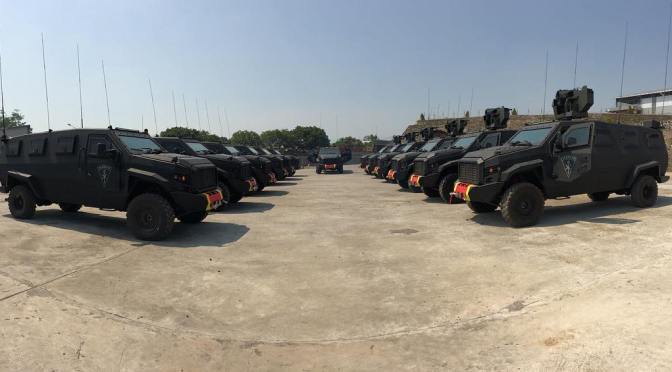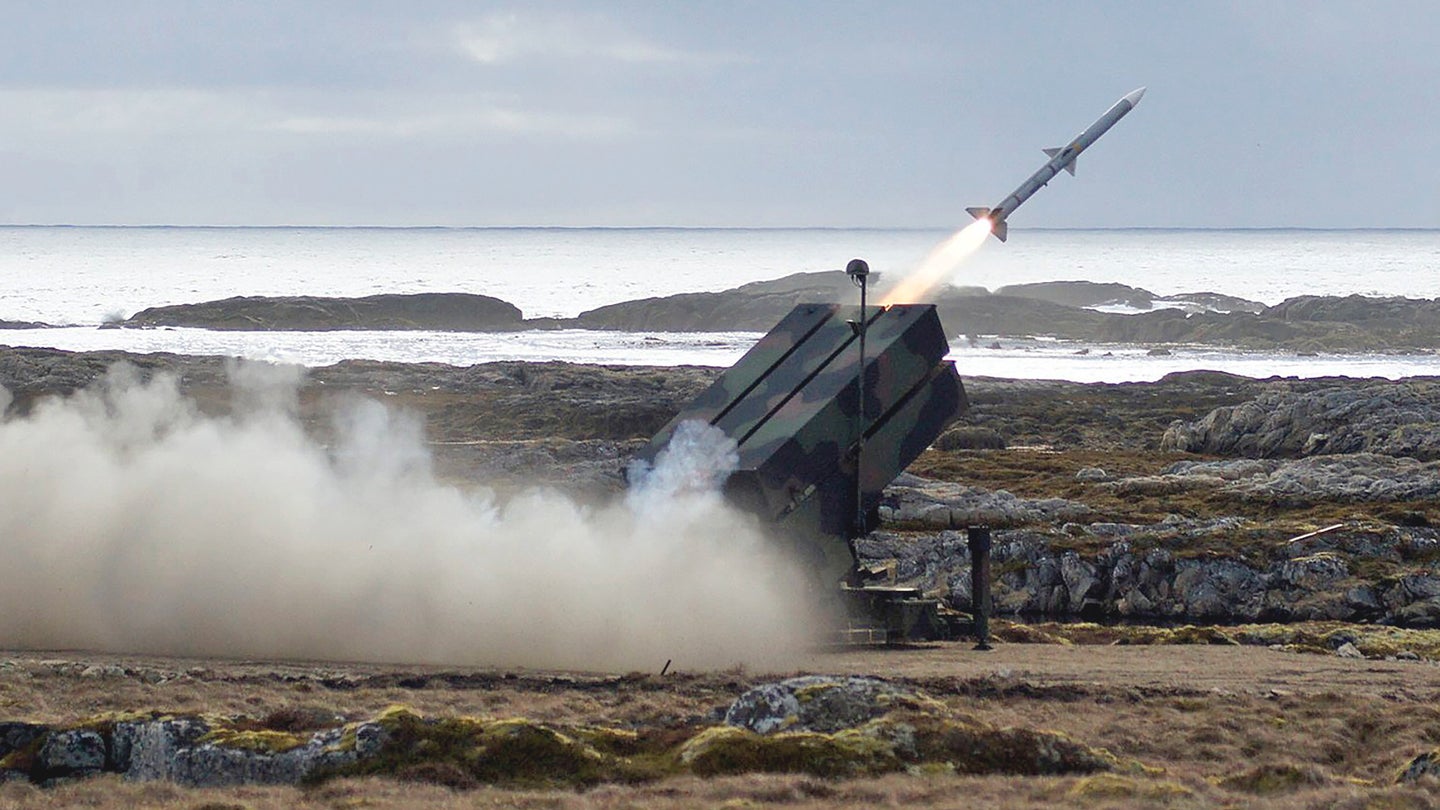Latest Thread
You are using an out of date browser. It may not display this or other websites correctly.
You should upgrade or use an alternative browser.
You should upgrade or use an alternative browser.
Indonesia Indonesian Air Force, Tentara Nasional Indonesia-Angkatan Udara (TNI-AU)
- Thread starter TR_123456
- Start date
Indonesian Airborne troops with local made Tugas Anda Turangga APC armed with Aselsan SARP




@ANMDT @T-123456 @Cabatli_53
Nice! I didn’t know Aselsan had a deal with Indonesia for Sarp RCWS. Thanks for sharing bro!
Nice! I didn’t know Aselsan had a deal with Indonesia for Sarp RCWS. Thanks for sharing bro!

Honestly this should be big reasoning to drop russian aircraft from TNI-AU and not acquire anymore in future. It will just cause interference and other issues and any workarounds are not optimal too.
Its just best to pick a side in your underlying C4I structure and build outwards from it.
@Chestnut
Indonesian Air Force largely geared toward their western block counterparts. From ground system and aircraft, most of them using western Made system. Recent deals with Scytalis to developing C4ISR infrastructure is big point where Indonesia Air Force future and Armed Forces lies. And actually CAATSA is blessing in disguise, as Minister of Defense and TNI largely can by pass the political hurdle to acquire more Western platform and avoiding Russian system once for all
speaking of whichIndonesian Nasams site, Teluk Naga


SAM System That Guards Washington DC Just Made Its Lowest Ever Intercept Of A Mock Cruise Missile
The National Advanced Surface to Air Missile System is critical to protecting America's capital and surrounding areas from air and missile threats.
BY JOSEPH TREVITHICKSEPTEMBER 24, 2020

The U.S. military conducted the lowest ever intercept of a mock cruise missile using the National Advanced Surface-to-Air Missile System, or NASAMS, during a test earlier this month. Operationally, NASAMS helps protect the airspace around Washington, D.C. and the larger surrounding National Capital Region. This test follows a number of other cruise missile defense experiments in the past year or so, including a recent demonstration of the ability of a self-propelled 155mm howitzer to bring down such a weapon using a hyper velocity projectile.
The test took place on Sept. 3, 2020 and involved a NASAMS situated on Santa Rosa Island, located off the coast of Florida in the Gulf of Mexico, engaging a very low-flying unmanned BQM-167 Skeeter target drone simulating an incoming cruise missile. The U.S. Air Force's 780th Test Squadron, based at Eglin Air Force Base in Florida and responsible for various conventional weapon testing, led the test as part of a program called Vermilion Stallion.
The service's 82nd Aerial Targets Squadron managed the launch and operation of the BQM-167, while personnel from the U.S. Army's 263rd Army Air and Missile Defense Command and 1st Battalion, 204th Air Defense Artillery manned the NASAMS. The 263rd is part of the South Carolina Army National Guard, while 1-204th is an element of the Mississippi Army National Guard.
The test had actually been pushed back due to Tropical Storm Marco and Hurricane Laura, which battered the region in August. More than $20 million worth of weapons and other equipment had to be relocated to safety before being sent back to Santa Rosa.
"This live-fire made history as the lowest altitude surrogate cruise missile ever impacted with the system," according to an Air Force press release. "The successful execution enabled the verification, validation, and re-characterization of the nation’s air defense system’s many upgrades."
Cruise missiles typically fly at low altitudes to avoid detection and intercept.
The release did not offer any details about these improvements to NASAMS, which is a ground-launched version of Raytheon's AIM-120 Advanced Medium-Range Air-to-Air Missile (AMRAAM) that that company developed in cooperation with Norway's Kongsberg Defense. The two defense companies have developed an extended range version of the system using a missile that combines components of the AIM-120C-7 and the RIM-162 Evolved Sea Sparrow Missile (ESSM), another Raytheon product.
In 2019, Qatar became the first country to officially buy NASAMS along with these AMRAAM-ER missiles. You can read more about NASAMS and the AMRAAM-ER in this past War Zone piece.
Upgrades to the NASAMS, especially to be able to detect, track, and engage especially low-flying threats, make good sense given how important the systems are to the critical task of protecting the airspace over and around the nation's capital. Though unknown to most Americans, NASAMS is the primary surface to air missile system in the National Capital Region. It is also supplemented by a number of AN/TWQ-1 Avenger short-range air defense systems at key locations. Air Force F-16C/D Viper fighter jets and Coast Guard MH-65 Dolphin helicopters are also on call to respond to contingencies.
This airspace is among the most heavily restricted and monitored in the world and any potential threats are taken very seriously. In November 2019, a possible intrusion triggered a lockdown at the White House and the Capitol, though that thankfully turned out to be a false alarm, as you can read about in more detail in this previous War Zone story.
This test also comes at a time when there has been a renewed focus on the potential threats posed by cruise missiles, both to American forces on the battlefield and U.S. territory, across the U.S. military. This was codified in the most recent Missile Defense Review that the Pentagon released last year. The previous review, which came out in 2010, was focused entirely on ballistic missile defense.
Protecting the National Capital Region against cruise missiles, including those fired from submarines or other ships, potentially operating clandestinely offshore, has long been a concern for the U.S. government. This was the primary driver behind the U.S. military's abortive Joint Land Attack Cruise Missile Defense Elevated Netted Sensor System, or JLENS, an aerostat-mounted radar system. This multi-billion-dollar program began in 1996 and finally came to end more than two decades later after numerous cost increases and delays.
This new attention to the matter of cruise missile defense has translated into a number of different initiatives, including work developing and acquiring various means of detecting and intercepting such weapons. During a multi-day Air Force-led experiment earlier this month, a U.S. Army XM1299 self-propelled 155mm howitzer shot down another BQM-167 simulating a cruise missile with a Hyper Velocity Projectile (HVP), an unprecedented feat.
"That’s video games, sci-fi awesome. You’re not supposed to be able to shoot down a cruise missile with a tank," Will Roper, the Assistant Secretary of the Air Force for Acquisition, Technology, and Logistics, said afterward. "But, yes, you can, if the bullet is smart enough, and the bullet we use for that system is exceptionally smart."
This experiment was primarily focused on exploring new networking capabilities able to link a wide array of weapons, sensors, and command and control nodes together. It also involved tests of HVPs fired from a 5-inch naval gun on a ground-based test stand a modified M107 self-propelled howitzer that appears to have been acting as a surrogate for the 155mm Advanced Gun Systems found on the U.S. Navy's Zumwalt class stealth destroyers.
An MQ-9 Reaper drone took down another BQM-167 with an AIM-9X Sidewinder, while an F-16C/D Viper shot down one more with a laser-guided 70mm Advanced Precision Kill Weapon System II (APKWS II) rocket during the event, as well. In both cases, the target drones were again meant to simulate incoming cruise missiles.
NASAMS was also present at White Sands Missile Range in New Mexico for this experiment. This appears to be unrelated to the Vermilion Stallion test off the coast of Florida.
The Army has also bought a small number of Iron Dome systems from Israel as an interim cruise missile defense system. The service curtailed that effort earlier this year, ostensibly over concerns about integrating it with the rest of its integrated air defense networks.
There had also been questions about just how well suited Iron Dome might be to cruise missile defense. It is primarily designed to knock down lower-tier threats such as artillery rockets and shells, mortar bombs, and small drones.
NASAMS successful interception of a mock cruise missile flying at very low altitude only underscores how important cruise missile defense is to the U.S. military at present, including when it comes to the defense of the nation's capital.

SAM System That Guards Washington DC Just Made Its Lowest Ever Intercept Of A Mock Cruise Missile
The National Advanced Surface to Air Missile System is critical to protecting Washington, D.C. and surrounding areas from air and missile threats.
Must be a mistake by the media bro? I can also see that there are 4 system on display there. Unless some of it is for other countries. I wonder if sipri got this one already updated on their list for this year procurements?
"Newspaper reports also claimed that in January 2004 the Czech defence sales company, Omnipol, received licence to sell six systems to China. However, US government pressure on the Czech government resulted in the cancellation of this contract."
This is a quote i took from wiki. If it were true, this system is quite advanced then since it made US block the purchase from China.
This is a quote i took from wiki. If it were true, this system is quite advanced then since it made US block the purchase from China.
I hope they got spares, each for Natuna and SaumlakiMust be a mistake by the media bro? I can also see that there are 4 system on display there. Unless some of it is for other countries. I wonder if sipri got this one already updated on their list for this year procurements?
This year MOT (Mission Oriented Training) hosted by the 3rd SQN at Iswahjudi Airbase from 19 - 28 October 2020,











That's all is part of one system lah, so what you see is only one system.
System composition
4 stations (1 central; 3 remote sites) and Central Processing Station
Frequency range
50 MHz – 18 GHz
Tracking capability
3 dimensional
Tracking capacity
200 real time tracks
Antenna unit power consumption "central/remote site"
230 W / 190 W
Range
up to 400 km
Target library capacity
10,000 targets
Antenna unit overall dimensions
Ø500 mm x 1200 mm receiving part, Ø500 mm x 600 mm comm. unit
Overall weight
125 kg (UMM 85 + MWL 25 + AU 12 + lightning rod 3kg)
Processed signals
Modern emitters including Radar, Datalink, Jammers, Navigation, Identification






















